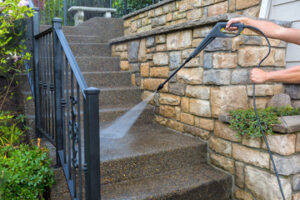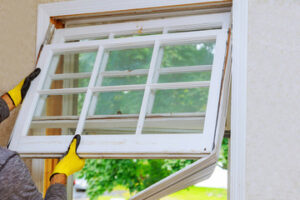When a party is right, it can bring out everyone’s best and create memories for years to come.
It’s a good idea to start a party in the evening, as people will be more refreshed. However, it’s important to avoid the busiest times, such as Saturday afternoons or Sundays. Click Bar Mitzvah Party to learn more.

Donuts are a party staple that can be topped, drizzled, or sandwiched in various ways. They’re a fun way to celebrate special occasions and are also great for a weekend treat. Toss them in a bowl of ice cream or pair them with wine for an indulgent dessert.
The history of donuts in America is one of sweet innovation and culinary craftsmanship. From humble beginnings in immigrant kitchens to their ascent as a pop culture icon, the journey of these fried delights mirrors that of America’s own evolution.
Whether you’re trying to limit food waste or simply don’t want to let your donuts go stale, these simple tips and tricks will help you save them. And with these creative ways to repurpose them, you can enjoy them for longer than you might think.
When stored properly, donuts can last up to two days. Room temperature is ideal, but refrigerating them can also extend their life. Be sure to individually wrap them and place in a sealable plastic bag to avoid freezer burn.
Another simple and effective method for preserving donuts is to pan-fry them. The donut’s crusty exterior and glazed coating are perfect for this treatment, which gives them a crispy outer layer with a chewy center. This technique works well for any type of donut, although traditional glazed donuts will react particularly well to this treatment.
Blending up stale donuts into bread pudding is another easy and creative way to use them. It limits food waste and makes for an impressive take on a classic dessert. Since donut crumbs have a sticky texture, they’re perfect for creating this no-fuss recipe, and you won’t need to add as much butter as you would with other types of stale bread.
50’s
The 50’s are a party staple and are the perfect backdrop for a fun and festive evening. Dress up in your best retro attire — channel your inner poodle skirt princess with a fitted jean blouse, cardigan, saddle shoes, and a scarf, or rock the greaser look with a leather jacket, t-shirt, jeans, and slicked back hair.
Decorate with checkered patterns and elements like jukeboxes and records. Create seating areas that resemble diner booths, and serve classic diner food like burgers and fries. Don’t forget dessert — rich, fudgy brownies are a must-have! Round out the night with drinks like milkshakes, soda pop, and punch. These nostalgic treats will put your guests in the mood to dance!
Circus
The circus is a party staple, and it’s a great way to get the kids involved in a fun and exciting activity. There are many different types of circus acts, from animal trainers to clowns, and there is something for everyone. In addition, circus music can help set the mood and create a sense of excitement for the guests.
A circus is a traveling entertainment show that features performers such as acrobats, animals, and clowns. It is usually performed in a large tent called the big top. Circuses can be found all over the world, and they are a great source of family fun.
Although circuses are popular with both young and old, they can be dangerous for children. Therefore, parents should take precautions to keep their children safe. These safety measures include making sure that they are supervised at all times. Additionally, parents should check to see whether the circus has a child-proofing policy.
There are also some concerns about the treatment of animals in circuses. While some circuses may provide adequate care for their animals, others are cruel and abusive. For example, some circuses force their animals to perform repetitive acts or live in small cages. This is a serious concern, and the circus should take steps to improve its treatment of animals.
In addition to the performances, circuses often offer educational activities. These educational activities can be very effective in teaching kids. For example, they can teach kids about the importance of keeping healthy and eating a balanced diet. They can also learn about the history of the circus and how it has evolved over time. In addition, circuses can also teach kids how to be an acrobat or a trapeze artist.
Sports Jerseys
Jerseys are powerful symbols of fan identity and allegiance, forging bonds between like-minded individuals who rally behind a common cause. Their popularity extends far beyond stadium walls, and they have become integral components of streetwear fashion. This trend has propelled sports jerseys into the realm of art, with fans scouring the globe for rare and vintage pieces. They’re also becoming increasingly prevalent outside of the sports world, appearing in music videos, films, and other popular media.
In addition to their role as artistic expressions, sports jerseys are a part of an immense economic market. In fact, their sales far exceed those of the global art market. However, there is no sign of these sales slowing down. In 2022 alone, jerseys generated 384.2 million dollars in revenue.
For instance, the Appalachian State football team recently redesigned its jerseys in celebration of coach Jerry Moore’s 20th season with the program. The new uniforms feature a throwback design that was popular in the ’80s, and they look great on current players.
The new uniforms are a nod to the United States, but they also make an international statement. For example, they use the same colors as the US Olympic team in Los Angeles 1984, including silver, red, and optical white. In addition to these classic hues, the new shirts include the logo of the Italian rock band Polifonic, which has performed at the festival in the past.
These jerseys are a must-have for any sports fan. They’re a perfect way to show your support for your favorite team and get in on the action. Just be sure to wear them properly. Avoid wearing them with sweatpants or shorts, and don’t wear a baseball cap or visor, which can distract from the look of the jersey.
Dress Up
Dressing up is a party staple that provides a sense of fun, creativity and excitement. It can also promote social acceptance and increase self-esteem. However, it is important to remember that not all dress-up is appropriate for every occasion. Dressing up can be used to convey an inappropriate message or can make people feel uncomfortable.
When someone says “to dress up” they mean to put on a different type of clothing than usual. This could be a formal dress for a party or a suit for work. The term can also refer to a costume, such as a superhero costume or a Halloween mask. It can also refer to a person playing dress up with friends, using everyday items to construct inventive costumes on the spot. Pots and pans, an empty soap box, and even your mother’s clothes can be useful in creating these costumes.
For a dress up party, you can make the atmosphere more exciting by decorating your home with themed items. For example, you can use a theme-related backdrop for photos and decorate the food with themed cupcakes or treats. You can also create a costume contest to encourage guests to put in extra effort and make their costumes unique.
If you’re hosting a dress up party, it’s a good idea to have plenty of dress-up clothing on hand. You can even provide a dressing room so that guests can try on multiple outfits. This can add a lot to the party’s entertainment value and give your guests something to talk about at the end of the night. You can even provide a prize for the best dressed, encouraging guests to put more thought into their outfits.








